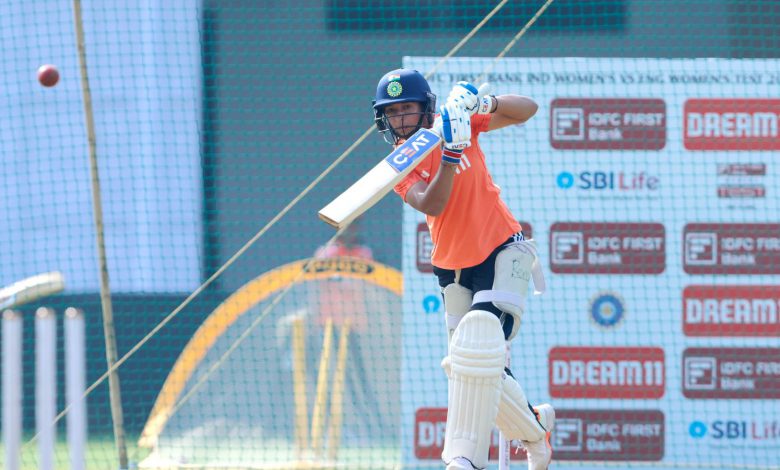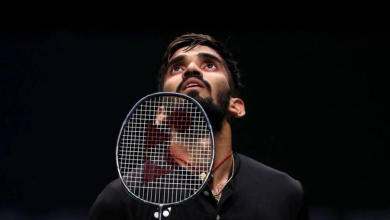Why no red ball cricket for women? As Harmanpreet Kaur and Co get ready for home Test matches after nearly a decade, a need for a domestic revival | Cricket News

Every player from either India or England who has spoken to the media in the last few days leading up to the one-off Test match starting on Thursday in Navi Mumbai has mentioned the excitement of playing the longest format and donning the whites. Test matches in the women’s game are rare, with only England and Australia – and India a bit more recently – playing somewhat regularly. Even for India, this match against England is the first home Test since November 2014.Harmanpreet Kaur and Smriti Mandhana, India’s captain and vice-captain, both voiced their desire to play more Test matches. It might not be feasible, but they both seemed happy at the prospect of something along the lines of a World Test Championship. But more relevantly, Harmanpreet called for more domestic red-ball multi-day matches to even help with the all-round skill development of cricketers.
“A Test championship is a call for ICC and Boards to take,” Harmanpreet said on Wednesday. “There needs to be more Test matches, according to me, even at the domestic level. This would help us improve our skills as cricketers because we play a lot of short-format cricket at the moment. Maybe that means a lot of skills are not there to be seen, for bowlers it is mostly defensive bowling. For developing more skills for aggressive bowling, it’s a little bit missing because we don’t play many Tests. More domestic Test cricket will help improve our skills that will help in shorter formats too.”
! 👏 👏
Captain has her eyes set on the Test match 👌 👌#TeamIndia | #INDvENG | @ImHarmanpreet | @IDFCFIRSTBank pic.twitter.com/wYlGmDsBnv
— BCCI Women (@BCCIWomen) December 13, 2023
‘Request to BCCI’
As someone who has officially played more than 50% of women’s Test matches for India, former captain Diana Edulji is happy to see India revive this format at home after nearly a decade but feels that it can be only a starting point. “Test is the ultimate form of the game. In our days we played a number of Tests, my number came down to 20 after a few matches were made unofficial due to mergers but even that is a big number compared to what the next generations have played. I do like this format of teams playing one Test when they come to visit us for white-ball cricket, I have been keen on this,” Edulji told The Indian Express.
The last women’s Test that didn’t feature one of India, Australia, or England was in August 2007. It is clear that the driving force for this format to have any significant growth lies between these powerhouses of the game. But oddly enough, even the most powerful of cricketing boards at the moment don’t have an active domestic multi-day circuit.
According to John Leather, a statician who follows a lot of the women’s game around the world, India are the most recent to have had at least a days-cricket domestic event. “India briefly revived their multi-day women’s domestic cricket in the 2010s, playing 10 inter-zonal matches a season for four years from 2014/15 until 2017/18 (2-dayers in 2014/15 and 3-dayers in the other three seasons). The last such match was played in 2018. England hasn’t played any multi-day domestic matches since the Territorial tournament in 1991. While in Australia, the last multi-day women’s domestic cricket was the finals series of the Australian Women’s Cricket Championship (pre-cursor to the WNCL) in 1994/95,” Leather said.
Red ball training ✅
Watch @katecross16 in the nets, taking us through her training session 🔴#EnglandCricket #ENGvIND pic.twitter.com/YYrjfLmSKd
— England Cricket (@englandcricket) December 13, 2023
While it seems obvious that boards lack incentive to prioritise the longer format in the women’s game because there simply aren’t enough Tests, the benefits of transferring skills must be considered.
“The most important thing is to have a domestic three-day or four-day event,” Edulji said. “I feel you learn the temperament to stay at the wicket playing more of this format, it is not that in T20 you just swing your bat around for a while. Even there, you need to understand how to learn to spend time in the middle. When you play the longer formats more, you learn to play proper cricketing shots. We see this as a habit now in T20s, a lot of cross-bat shots which I am not in favour of. You take the likes of Virat, Rohit etc. They find the gaps in shorter formats with good shots, it’s because of their skillset. I request the BCCI to have at least one domestic tournament every year for the longer version. Skills will improve the more you play the longer version.”
More Tests needed
It is the most obvious void in the women’s game, with the ICC primarily using T20 as the tool to grow it globally. There have been success stories through this route, the most notable being Thailand. But the gulf in volume of longer format matches between the men and women is far too big, and one-off Tests – while obviously a big deal for players – cannot be the be-all-end-all.
Mandhana feels that more of these international Tests could be a way to have a trickle down-impact. “To be fair, we play a lot of T20Is and one-dayers in the last 4-5 years,” she said. “The domestic structure is formed in terms of getting us the T20 and one-day experience because we had more World Cups. The structure was designed according to that. We did not play as many, of course, I have played only four in 10 years. When Test matches increase internationally, we will see maybe a new domestic tournament that will be focussed on two-day or four-day. It is always the international demands, whatever they are, the domestic are designed according to the way the demand is going to be.”
The real impact of these two women’s matches, beyond what happens on the pitch, will be felt if there is an insence on playing the longer format more those who run the game. In fact, as Harmanpreet said on Wednesday, Indian cricket can play its part doing more for this drive.
“I think it should be the prime duty of the BCCI to promote the longer version of the game,” Edulji said. In a month we are playing two Tests, fair enough, I don’t mind. Let us ins that in every bilateral series whether at home or away, that we will play one Test. Even if we play 4-5 Tests every year, it’s good. This will automatically improve India’s bench strength too.”
Over the next week and more, Navi Mumbai and Mumbai will play host as a few more cricketers get the taste of red-ball, white-kit action for the first time. It’ll be a dream come true, no doubt. As Harmanpreet said, there will be butterflies in the stomach – of the good kind, of the excitement that comes along with the unknown. But for these matches to mean more in the long term, there is work to be done.







